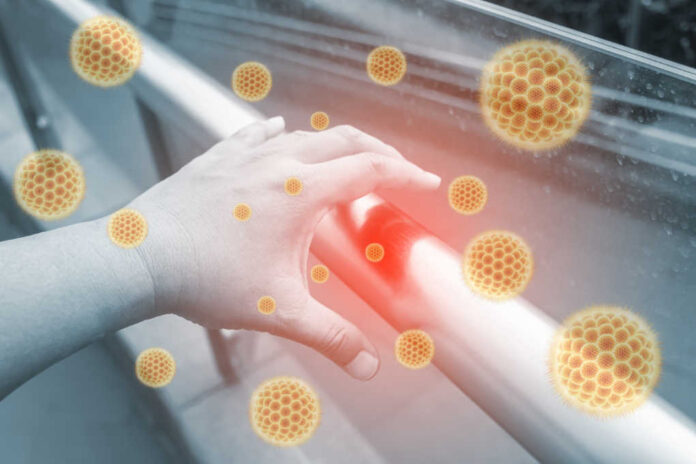
Drinking alcoholic beverages – beer, wine, liquor, etc. – won’t cure your infection or make you immune to catching diseases in the future.
But solutions made with high concentrations of alcohol can kill bacteria, viruses, and fungi on your skin and other surfaces, reducing their numbers and your risk of infection.
How Does Alcohol Kill Germs?
Alcohol molecules break down the proteins that make up the structure of bacteria, viruses, and fungi. This process is known as denaturation.
As the proteins break down, the cells can no longer function properly. They lose their protective membranes and quickly die.
Alcohol-based hand sanitizers contain either ethanol or isopropanol as the active ingredient. You want a product with at least 60% ethanol or 70% isopropanol to be effective as a disinfectant.
These products are not safe to consume. Drinking these products can have life-threatening consequences. Keep out of reach of children and pets.
What Types of Germs Can Alcohol Kill?
Not all germs are equally susceptible to alcohol, but it is effective against a wide range of bacteria, viruses, and fungi.
High concentrations (at least 60%) of alcohol can eliminate common bacteria and viruses such as:
- E. Coli
- Staphylococcus aureus
- Salmonella
- herpes viruses
- hepatitis B
- influenza
- rhinoviruses
- coronaviruses
Alcohol is not effective against the viruses that cause hepatitis A or polio. Some bacteria, such as Enterococcus faecalis, evolve to become more resistant to alcohol-based solutions.
Using Alcohol as a Disinfectant
You can use alcohol-based solutions to disinfect your hands and surfaces in your home and office.
When using an alcohol-based sanitizer on your hands:
- Wash or remove any dirt or debris on your hands first.
- Apply a dime-sized amount of sanitizer to the palm of one hand (unless otherwise indicated on the product’s direction label).
- Rub your hands together, covering all surfaces of your hands and fingers.
- Continue rubbing until your hands feel dry.
- Reapply when you need to disinfect your hands again.
Refer to the FDA’s guidelines to ensure the product you are using is safe and effective.
You can also use alcohol-based solutions to disinfect surfaces:
- Wear gloves when cleaning surfaces to protect your hands.
- Open a window if possible to ensure good ventilation.
- Remove visible dirt and debris with soap and water.
- Read and follow the instructions that come with the product you’re using.
- Use the solution to wipe down the surface thoroughly.
- The surface should remain visibly wet for at least 30 seconds.
- Clean frequently touched surfaces such as door handles, light switches, and countertops regularly.
Alcohol-based solutions are flammable. Use extreme caution when using them around open flames, or find another option.






















